Witch Head Nebula
Witch Head
This reflection nebula is really evocative shape of a head of Witch.
On the bottom photo, the Head Nebula Witch or IC 2118, is associated with the star Rigel (β Orionis / β Ori, it stares, Rigel is the brightest star in the constellation of Orion.
Also known by the name of IC 2118, the Witch Head Nebula shines mainly thanks to the light that is reflected from Rigel on the fine dust of the nebula.
On the picture against the blue reflecting off the dust of the nebula of the Witch Head is due not only to own the color blue Rigel, but also to the fact that only the blue light spectrum Rigel which disperses the fine grain of the nebula.
Nebula, the Witch Head is about 800 light years from our Sun.
Image: The Head Nebula Witch or IC 2118. The dust reflects more blue than red, as our earth's atmosphere where the blue sky.
Image Data: Digitized Sky Survey, Noel Carboni
NB: The reflection nebulae are huge dust clouds that reflect light of several nearby stars and bright enough to make the reflecting dust. When the stars are very hot, they cause ionization of gas clouds, creating an emission nebula. Reflection nebulae are usually blue. Reflection nebulae and emission nebulae are often combined into a single type, diffuse nebulae.
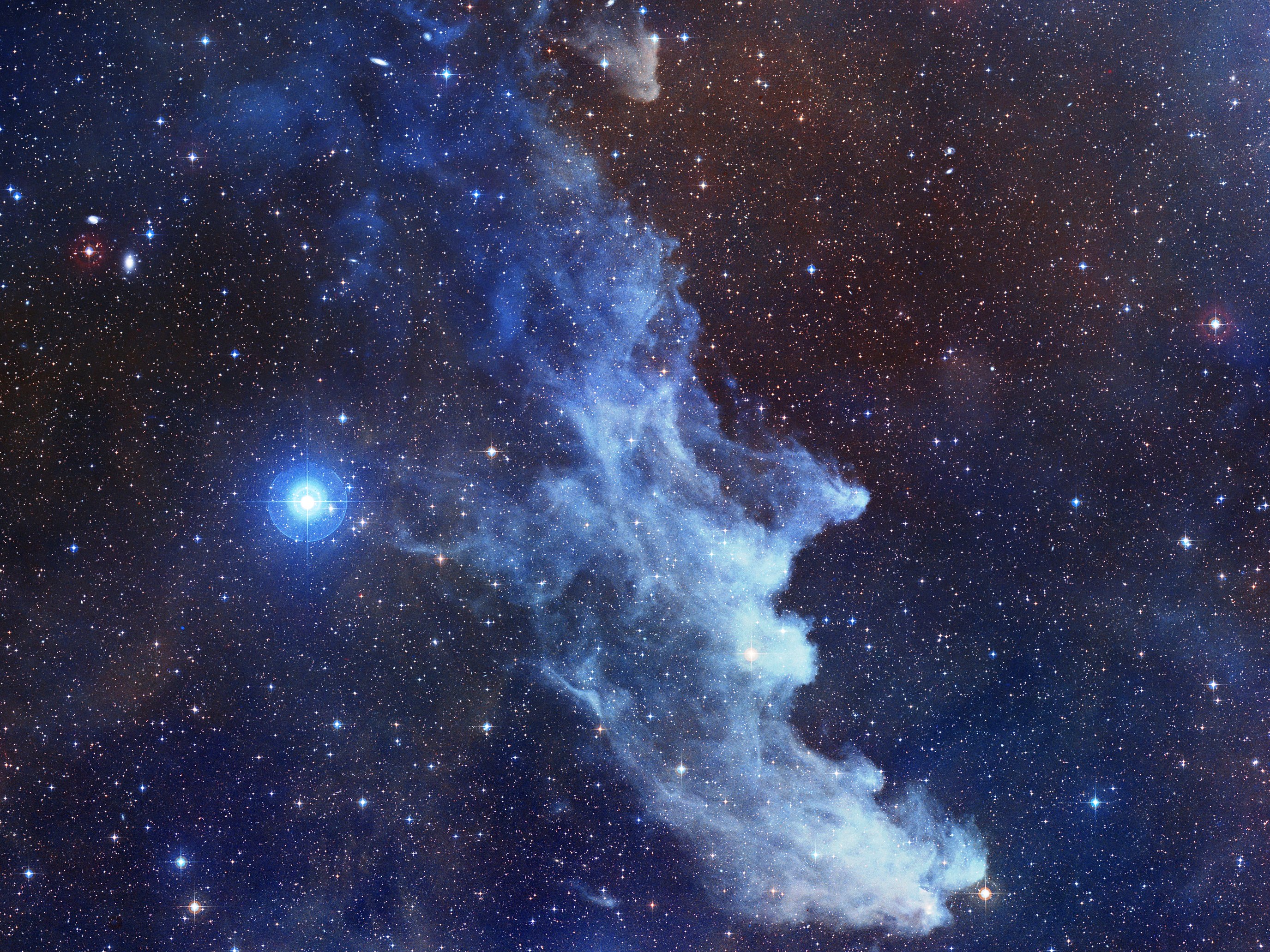
Witch Head Nebula or IC 2118
Nebula, the Witch Head is a reflection nebula, i.e. it reflects light from nearby stars.
Reflection nebulae are clouds of dust which reflect the light from just one or several nearby stars. This is the case here Rigel which floods its radiation light dust of the head of the Witch.
The stars of reflection nebulae are not hot enough to ionize the gas that composes, in contrast to emission nebulae. The distinction between these two types of nebulae was made by Edwin Hubble in 1922. Rigel is the seventh brightest star in the sky and lies between 650 and 950 light years from the Sun. The estimated absolute magnitude of -6.7 is Rigel is a blue supergiant, 55,000 times brighter than the Sun. With a diameter of about 116 million km, it is 84 times larger than the Sun. Like many supergiants, Rigel brightness varies from 3 to 30%, irregularly over a period of 25 days on average.
This variability can be explained by the pulsations of the surface of the star.
Image: The Witch Head Nebula or IC 2118.
Rigel, the star center of the photo, is the seventh brightest star in the sky and lies between 650 and 950 light years from the Sun.
Credit & Copyright: Rogelio Bernal Andreo.

Articles on the same theme
1997 © Astronoo.com − Astronomy, Astrophysics, Evolution and Ecology.
"The data available on this site may be used provided that the source is duly acknowledged."
How Google uses data
Legal mentions
English Sitemap − Full Sitemap
Contact the author
 Composition of Interstellar Dust
Composition of Interstellar Dust 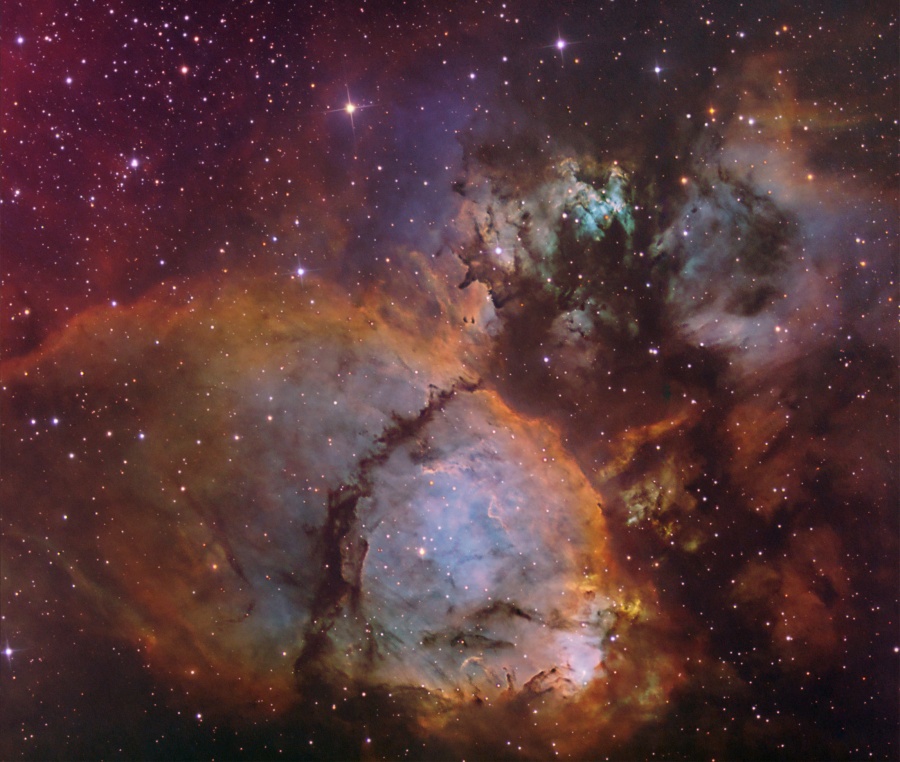 Heart and soul nebula
Heart and soul nebula  Clouds of dust
Clouds of dust  The Black River: Dark Silhouette of the Milky Way
The Black River: Dark Silhouette of the Milky Way  Cone Nebula, nightmare creature
Cone Nebula, nightmare creature  The Tarantula Nebula: A Cosmic Jewel
The Tarantula Nebula: A Cosmic Jewel 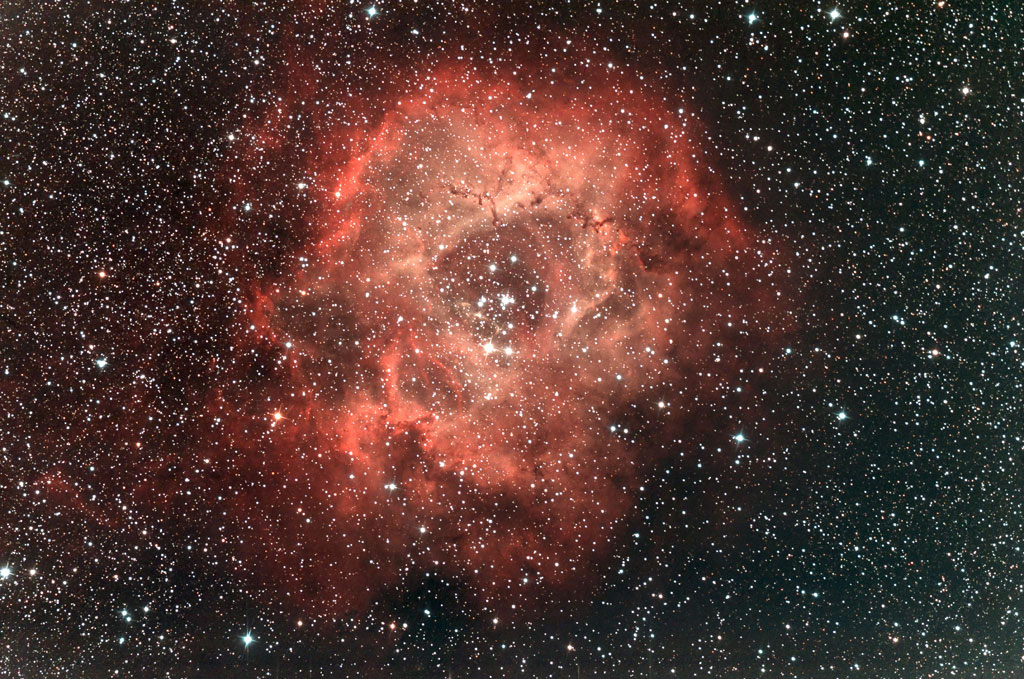 The sculpture of the Rosette
The sculpture of the Rosette 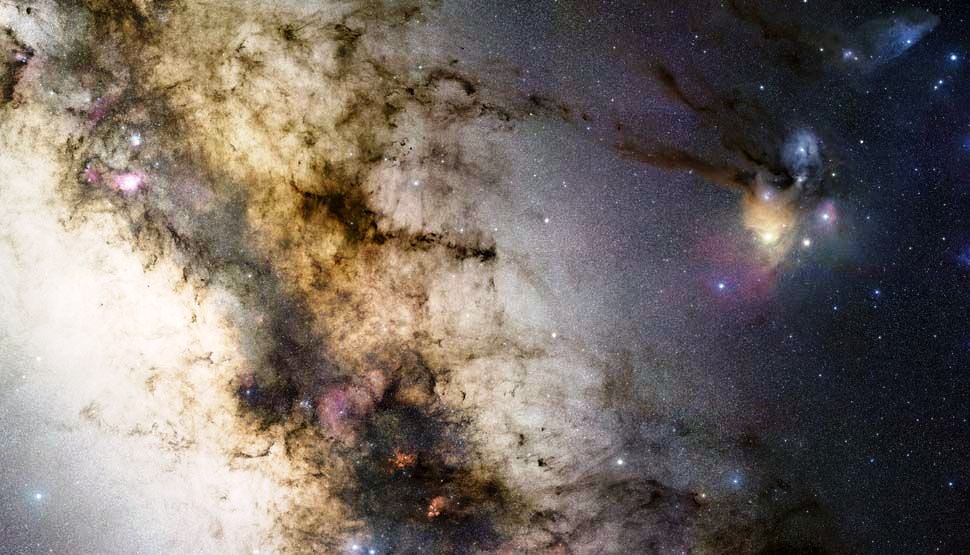 Journey to the center of our galaxy
Journey to the center of our galaxy  The nebula NGC 346 in the Toucan
The nebula NGC 346 in the Toucan  Nebula NGC 2170 seen by VISTA
Nebula NGC 2170 seen by VISTA 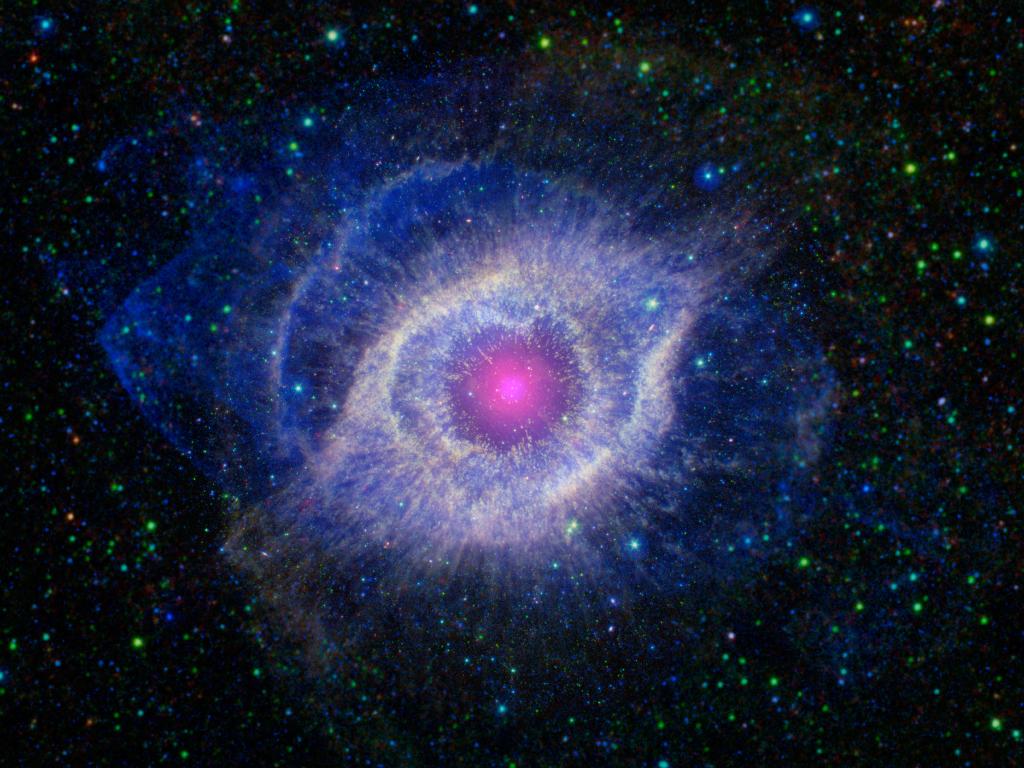 Helix Nebula, God's Eye
Helix Nebula, God's Eye  The most beautiful nebulae
The most beautiful nebulae  The death of stars seen by hubble
The death of stars seen by hubble  Diffuse, Dark, and Planetary Nebulae: A Physical Classification
Diffuse, Dark, and Planetary Nebulae: A Physical Classification  Carina: A Nebula More Active than the Horsehead and Orion Combined?
Carina: A Nebula More Active than the Horsehead and Orion Combined?  The famous Orion Nebula
The famous Orion Nebula  In the heart of the Crab
In the heart of the Crab  Planetary nebulae
Planetary nebulae 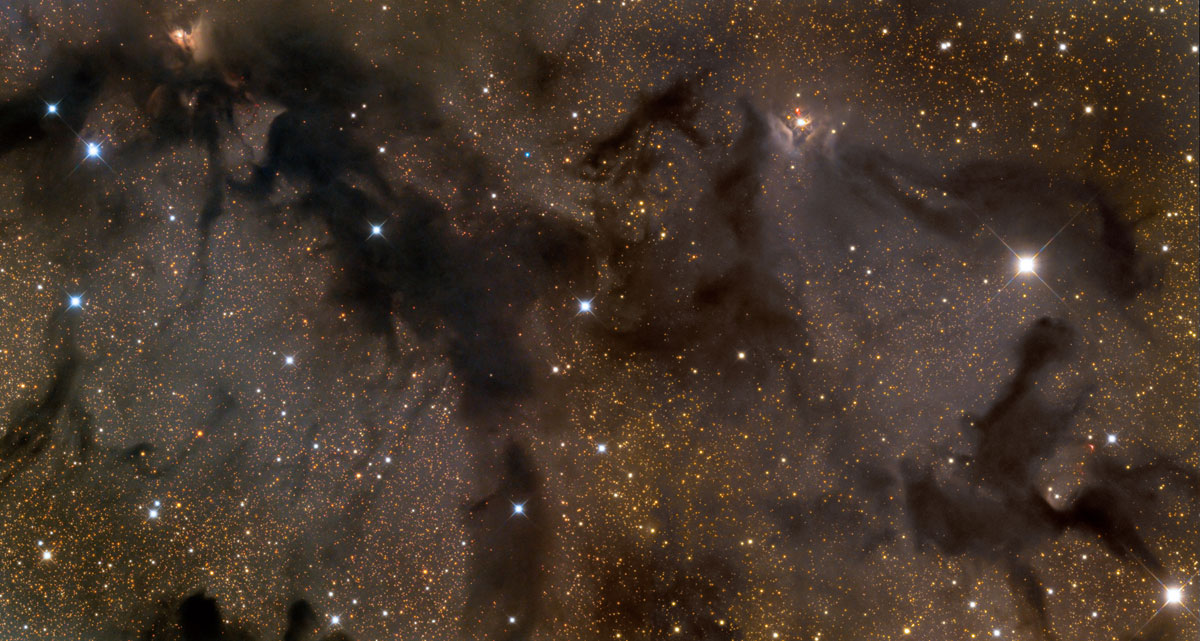 The light and dark of nebulae
The light and dark of nebulae  Coatlicue: The Mother Nebula of the Sun and the Solar System
Coatlicue: The Mother Nebula of the Sun and the Solar System